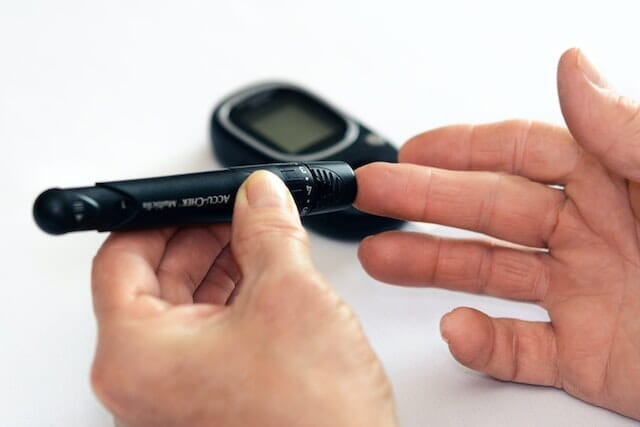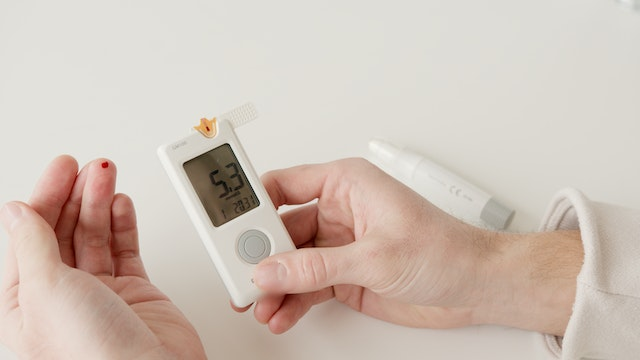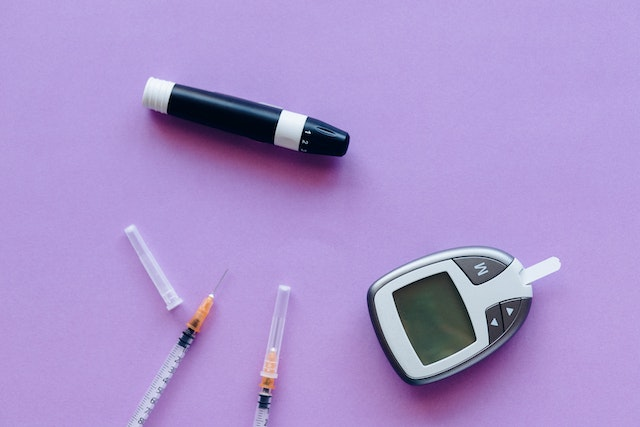
How is a Continuous Glucose Monitor (CGM) device inserted?
Time to read 5 min
Time to read 5 min
When it comes to a continuous glucose monitor or CGM, you need a specialist to insert the device. A tiny surgical incision is performed in the skin, around the upper arm region, and the sensor is placed inside it. A transmitter is worn on the other side that relays that data to a receiver, generally a smartphone. You can get accurate and real-time glucose levels data through the CGM ecosystem.
There are several inherent benefits of using the right CGM device. You can get better quality blood glucose levels when using a CGM compared to finger pricking and other methods. It is also a more convenient option, which is why many people managing diabetes prefer tracking their levels with a CGM device.
One of the most important reasons why people use CGM devices is the ease at which you can track your levels daily. You don't need to use any other device or system to measure multiple recordings each day, when you have a CGM embedded.
The ease of installation at the arm is one of the main reasons why people use CGM devices. You can get your glucose levels checked daily, multiple times a day, without worrying about uncomfortable pricking or other forms of blood drawing.
With a CGM device, you can get more consistent tracking of levels throughout the day. You can get your glucose levels checked before and after meals, to optimize your diet. You can also check your levels during exercises so that you can sustain your glucose levels through intense workouts.
If you are planning on using a continuous glucose monitor, then understanding how it works can help you manage it better. The following steps are involved in the installation and working of a CGM device.
1) A tiny sensor is inserted in the skin, generally in the upper arm region, which will start to record the sugar level readings.
2) The sensor is designed to read the interstitial glucose level for a fixed number of days (usually 14 days)
3) Through a built-in transmitter the data is sent to a reading device, which displays your sugar level readings in regular intervals.
4) Some products are designed to transmit data to a dedicated device, while others can send data to your smartphone directly.
There are many benefits to using a continuous glucose monitor device, which is why it is rising in popularity. You need the right CGM device that is developed by a trusted manufacturer so that you can accurately measure your blood sugar levels over time.
Older people and individuals that are sensitive to pricks can use a CGM as an ideal alternative. It allows people to access critical health information without undergoing invasive pricks daily. You can also improve your adherence to tracking protocols when you have an automated sensor capturing device installed.
A key reason why people use a CGM device is the adapting to their lifestyle. You can go swimming, exercise, go for long walks, and enjoy a party, while having complete control over your glucose levels in real-time.
A major benefit of opting for a CGM is the accuracy with which your glucose readings can be measured. You can get the right sugar levels data from within the sensor-reader ecosystem, as it is installed directly in your skin.
A CGM is one of the most convenient ways of gaining sugar level data, making it an ideal way to track health markers. You can also share a screenshot or report of your data with your healthcare provider for any oversight or recommendations.
There are minimal restrictions about how many readings can be captured using the CGM device. You can gather information about your blood glucose levels with ease at any time. There is a continuous monitoring provided to you when you opt for a quality CGM device.
A CGM is the only device that records your blood sugar levels during your sleep. Since the tracker is inserted within the body, there is no need for finger pricks and no requirement of sleep data analysis.
The sensor automatically tracks data during your sleep, to provide doctors with blood sugar data when you sleep. Any significant spikes or dips can be tracked in real-time, making it highly important to use a CGM for tracking.
When using a CGM device, you need to be mindful of a few points. You need to check the continuous glucose monitoring CGM device twice a day to ensure that it is functioning effectively.
You can test a few drops of blood on a glucose meter and test your blood sugar levels through the device at the same time. The result should be identical, indicating that the device is measuring your glucose levels accurately throughout the day.
As a part of your regular upkeep, you need to also replace the CGM sensor every week or fortnight, based on what the manufacturer recommends. This will help you get accurate measures of your blood glucose levels so that you can manage your sugar correctly.
What is important to remember is to act immediately when your CGM starts to make sounds or notifies you of anomalies. It is important to take immediate action to control sugar levels for people with diabetes so that you can use an insulin pump when needed.
It's important to consistently track your sugar levels through the continuous glucose monitoring device. You should be able to track various levels within the reading, ensuring that the sensor is working correctly.
If you have diabetes and are looking to manage the disease long-term then you need the right sugar tracking device. You need to track your levels consistently to ensure that you can detect any spikes quickly. You can also get a better sense of why your levels are fluctuating over time, if there are no changes in your diet or lifestyle.
Tracking sugar levels closely can help in bringing visibility into insulin requirements. Tracking the highs and lows of sugar levels consistently can provide better insights to doctors who can monitor people with diabetes closely.
Another important reason why tracking sugar levels consistently is key is to manage high and low blood sugar issues closely. Both hyperglycaemia and hypoglycaemia can be tracked better with the right management strategies.
A major benefit of closely tracking sugar levels is the prevention of life-threatening situations. The risk of having a life threatening episode declines significantly when you are able to measure your blood sugar levels throughout the day.
Tracking sugar levels consistently can help provide greater control through periods of unpredictability. If you find that your energy levels fluctuate significantly throughout the day, then there may be an issue with your sugar levels management.
* Medical Disclaimer - The following information is for educational purposes only. No information provided on this website, including text, graphic, and images, are intended as substitutes for professional medical advice. Please consult with your doctor about specific medical advice pertaining to your condition(s).

